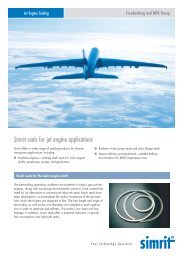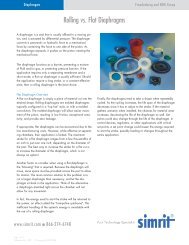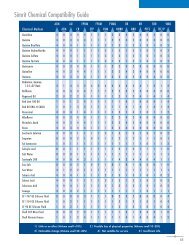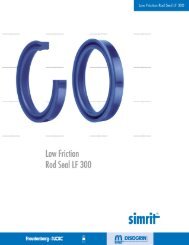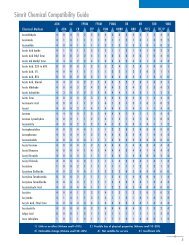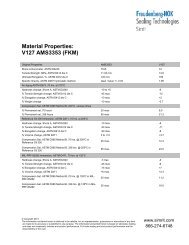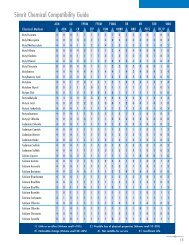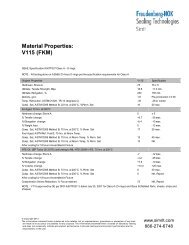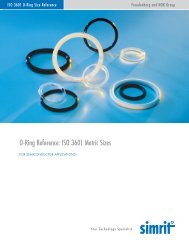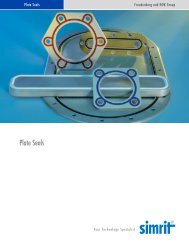Diaphragm Design Manual - Simrit
Diaphragm Design Manual - Simrit
Diaphragm Design Manual - Simrit
You also want an ePaper? Increase the reach of your titles
YUMPU automatically turns print PDFs into web optimized ePapers that Google loves.
As with all hardware surfaces, the corresponding radii on the hardware must also be the same asthose on the diaphragm and must be as smooth as possible.Please reference Figures 2, 3, 4, and 6 along with Tables 6, 7, and 9 for illustrations andrecommended sizes of transition radii.Assembly IssuesMaterial CompressionOne of the more reoccurring causes for diaphragm failure and poor performance can beattributed to the compression of the diaphragm during assembly. Proper compression is requiredto affect a long lasting seal in both the piston and flange areas.The typical failure modes are over-compression, leading to flex failure, or under-compression,leading to leakage. The root cause of the problem stems from the difficulty in controlling thecompression on the diaphragm’s sealing surfaces during assembly.The elastomer portion of the diaphragm can only support a limited amount of compression. Inan over-compression situation the assembly load exceeds the compression resistance of theelastomer and extrudes elastomer out to unclamped areas of the diaphragm.In an under-compression situation, the assembly load is too light and does not approach thenormal compression limit of the elastomer for an effective seal.The challenge facing the designer is the difficulty in determining what the proper loading shouldbe for their particular application. Further exacerbating the loading issue is the effect oftemperature and / or fluid on the compression set properties of the elastomer (see the section onthe Effects of the Application Environment for more details).To maintain a stable compression set and therefore a proper seal the loading capacity of theelastomer must not deteriorate.Due to the wide variety of applications and available elastomers, it is often necessary to do a cut-In order to arrive at an appropriate amount of flange compression via thisand-try method.method:1) The material must be tested while under compression2) Various temperatures must be tried3) Several suitable contact test fluids must be usedIn the past designers attempted to solve compression related sealing issues by designing thickerparts (see <strong>Design</strong> Guideline – The Ideal <strong>Diaphragm</strong> Thickness at the beginning of thissection for more on this point).Assembly Specific IssuesScrewed and BoltedIf screws or bolts are planned for holding the assembly together, a torque requirementwill have to be determined in order to produce the optimum loading. Here again, the© Copyright FNGP 200936



